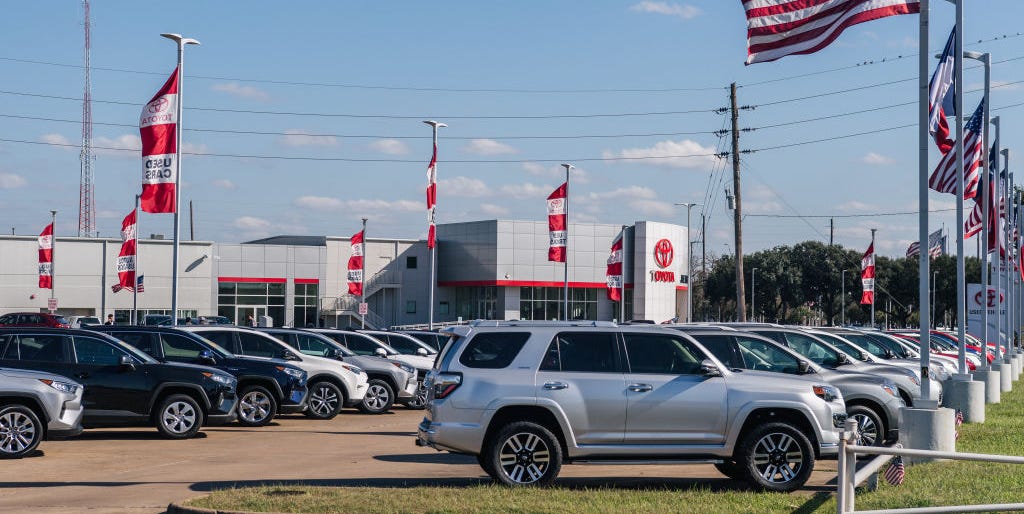- Remember last spring when there was shocking news that the average new car price had hit 40 grand? Good times.
- KBB has calculated that the average price of a new car in the U.S. as of December was $ 47,077. That’s an increase from $ 46,329 in November.
- You probably already know the reasons: the COVID-19 pandemic, supply chain issues and a chip shortage, and automakers who have decided to build their more profitable models in a time of scarcity.
It was certainly news in the summer of 2021, when the average price for a new car topped $ 40,000, but now that it’s 2022, car buyers would probably love to see those numbers on their car’s sticker. That’s because the average new car price in the U.S. rose to $ 47,077 in December.
The new average was noted by the Kelley Blue Book, which has also calculated an astonishingly rapid rate of increase in car prices for the past three years. Average price jumped just under $ 1,800 in 2019, then just over $ 3301 in 2020, and then a staggering $ 6,220 in 2021. This is the kind of increase that takes you to new car prices that December Hit $ 47,077 after rising to $ 46,329 in November.
“Today’s environment is essentially unprecedented for the modern automotive industry; we’ve never been in a situation where demand really exceeds supply of new vehicles, ”IHS Markit analyst Stephanie Brinley told Car and Driver. “This has created a new price dynamic, which ultimately leads to the reported average transaction prices rising.”
According to KBB, the two main factors behind this price hike are reduced supply and increased demand, partly caused by the pandemic and the associated chip shortage. But dealers and car manufacturers are also taking advantage of the situation. Brinley said cars have gotten more expensive in recent years, thanks in part to new technology features as well as more content that comes standard on entry-level vehicles.
On the automaker’s side, we’ve heard for months that companies were shifting production to high-profit models as chip scarcity limited the number of vehicles they could build, meaning that more cars were buying more lots of the more expensive equipment and models was. That meant buyers looking to buy were faced with inventory at prices higher than they would expect.
Spencer PlattGetty Images
“Multiple features have been a trend for several years, but in a situation where demand is greater than supply, some automakers have chosen to prioritize the production of vehicles with higher margins, which changes the mix of vehicles available and can contribute to rising transaction prices. regardless of whether the EIA is changed, “said Brinley.
Dealers also did their part by not offering the kind of discounts buyers are used to and, in some cases, adding many thousands of dollars in “market adjustment” to new car prices. KBB notes that December dealer incentives – traditionally a good time to sell luxury vehicles – were at a five-year low.
“The shortage of inventory has also allowed automakers to reduce incentive levels across the board, which may also contribute to increases in average transaction prices,” said Brinley. “Also, retailers ultimately set the price that the consumer pays. When supply is less than demand, retailers can set prices above MSRP, which also increases average transaction prices.”
We recently found that used car prices are rising too, with the average used car price exceeding $ 27,500 in December 2021. The same applies to used electric vehicles, where prices are almost 27 percent higher today than in March 2021. This increase was in part driven by the same factors that are causing prices for all vehicles to rise, as well as the “frequent and quiet price increases”, which Tesla gave its new cars last year, according to a new EV trend report from Recurrent that tracks used electric vehicle information.
This content is imported from {embed-name}. You may find the same content in a different format or more information on their website.
This content is created and maintained by a third party provider and imported onto this page to assist users in providing their email addresses. You may find more information on this and similar content at piano.io

